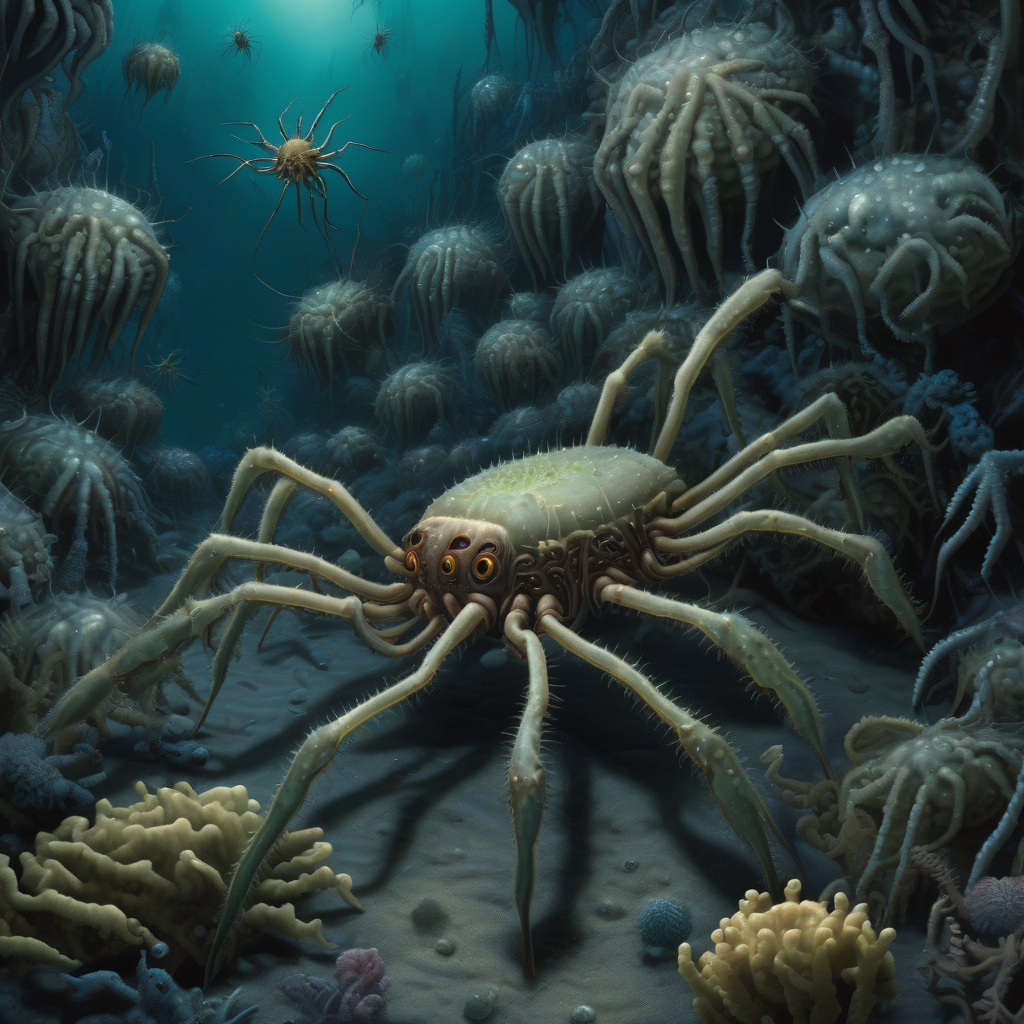Scientists Discover First Sea Spiders Powered by Methane-Fed Microbes in Deep Pacific
Methane is a menace to Earth’s climate, but to tiny spiders in the pitch-black depths of the Pacific Ocean, it is a source of life. Recently, a groundbreaking discovery has been made by scientists who have found the first sea spiders that are powered by methane-fed microbes in the deep Pacific waters. This finding not only sheds light on the mysterious ecosystems thriving in the ocean’s depths but also highlights the incredible adaptability of these unique creatures.
Sea spiders, also known as pycnogonids, are a group of marine arthropods that are found in oceans around the world. They are known for their unusual appearance, with long, thin legs and a small body. These creatures are typically found in shallow waters, where they feed on small invertebrates. However, the discovery of sea spiders that are able to survive on methane-fed microbes in the deep Pacific has opened up a new understanding of their capabilities.
The deep Pacific Ocean is a harsh environment, with extreme pressures, cold temperatures, and little to no sunlight. Despite these challenges, a diverse array of species call this mysterious world home. The discovery of methane-powered sea spiders adds to the growing body of research that shows the incredible adaptability of life in the deep sea.
The methane that fuels these sea spiders comes from methane seeps on the ocean floor. These seeps are areas where methane gas escapes from beneath the seafloor, providing a source of energy for microbes that in turn support a variety of other organisms, including the newly discovered methane-powered sea spiders. This unique ecosystem highlights the interconnectedness of life in the deep sea and the importance of understanding these fragile environments.
Scientists believe that the ability of these sea spiders to survive on methane-fed microbes may have evolved as a result of the challenging conditions in the deep Pacific. By tapping into this alternative energy source, these creatures have found a way to thrive in an otherwise inhospitable environment. This discovery raises important questions about the potential impacts of methane seeps on deep-sea ecosystems and the role of methane in supporting life in the ocean’s depths.
The findings of this study have significant implications for our understanding of marine ecosystems and the potential effects of climate change on deep-sea life. As methane continues to be released into the atmosphere at an alarming rate, studying how it impacts deep-sea organisms like the methane-powered sea spiders is crucial for predicting the future of these fragile ecosystems.
In conclusion, the discovery of the first sea spiders powered by methane-fed microbes in the deep Pacific is a testament to the resilience and adaptability of life in the ocean’s depths. By uncovering the secrets of these unique creatures, scientists are gaining valuable insights into the complex relationships that shape marine ecosystems. As we continue to unravel the mysteries of the deep sea, it is essential that we work to protect these fragile environments for future generations to appreciate and study.
#SeaSpiders, #MethaneMicrobes, #DeepPacificDiscovery, #MarineEcosystems, #ClimateChangeImpacts












